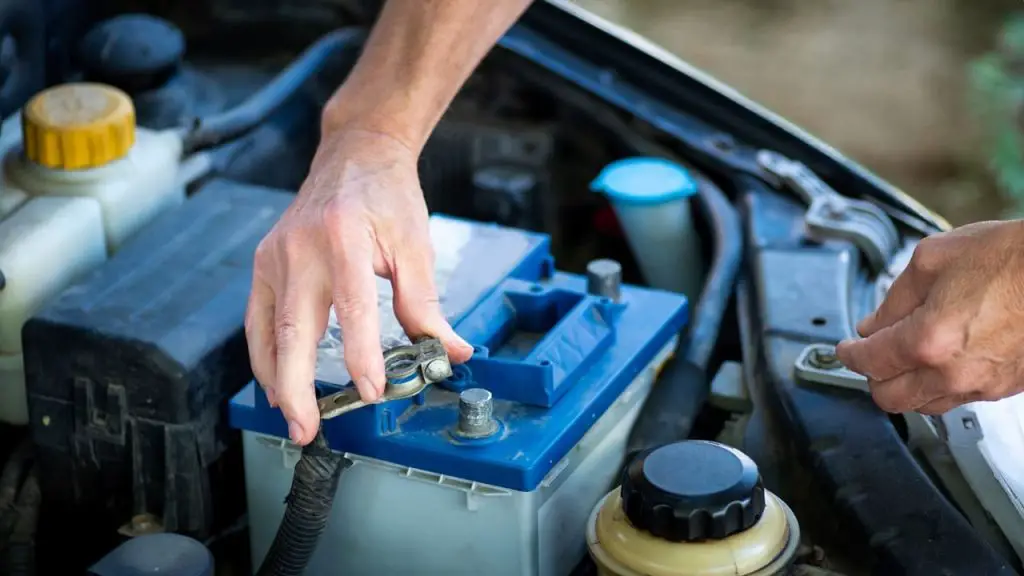Have you ever wondered what would happen if the water level in your car battery is low? Many people are unaware of the importance of maintaining the water level in their vehicle’s battery.
The battery is a vital component of any vehicle, and it requires regular maintenance to ensure it functions correctly. This includes checking the water levels in the battery.
However, many car owners overlook this crucial step, leading to potential problems with their vehicle’s battery. Low water levels in your car’s battery can lead to a range of issues, from decreased performance to complete battery failure.
It’s essential to understand the impact of low battery water levels to prevent any damage to your vehicle and ensure it runs smoothly. In this article, we’ll explore the consequences of low battery water levels and provide tips on how to maintain your battery’s water levels.
What is battery water?
Battery water is a type of distilled water that is used to fill lead-acid batteries such as those found in cars, motorcycles, and boats. This water is specially designed to be free of impurities and minerals that could potentially harm the battery.
The reason why battery water is so important is that it helps to maintain the electrolyte levels within the battery, which is necessary in order for the battery to function properly.
When the electrolyte levels within the battery are too low, the battery will not be able to hold a charge and will ultimately fail. Therefore, it is essential to use the right type of water when filling a lead-acid battery.

Symptoms of low battery water levels
Slow cranking or difficulty starting the engine
One of the most common symptoms of low battery water levels is slow cranking or difficulty starting the engine.
When the battery water level is low, there may not be enough electrolyte solutions to generate the required power to start the engine.
Dimming headlights and interior lights
Another sign of low battery water levels is dimming headlights and interior lights. When the electrolyte solution is low, the battery may not be able to produce enough power to keep the lights bright.
Corrosion on battery terminals
Low battery water levels can also cause corrosion on the battery terminals. When the electrolyte solution is low, the battery acid becomes more concentrated, which can cause corrosion on the battery terminals.
Swollen battery case
If the battery water level is low, the battery case may become swollen. This is because the battery is working harder to produce the required power, which can cause the battery case to expand.
Low specific gravity readings
Low battery water levels can also cause low specific gravity readings. Specific gravity is a measure of the battery’s ability to hold a charge.
When the battery water level is low, the specific gravity readings may be lower than normal.
Overheating battery
If the battery water level is low, the battery may overheat. Overheating can cause damage to the battery and reduce its lifespan.
Reduced battery life
When the battery water level is low, the battery’s lifespan may be reduced. This is because the battery is working harder to produce the required power, which can cause damage to the battery over time.
In summary, low battery water levels can cause a range of symptoms, including slow cranking, dimming lights, corrosion on battery terminals, swollen battery case, low specific gravity readings, overheating battery, and reduced battery life.
It is important to regularly check the battery water level and add distilled water as needed to prevent these issues.
What happens if battery water is low
Reduced Battery Performance
If the water level in your battery is low, the battery’s performance will be affected. The battery will not be able to hold a charge for as long as it should, and it may not be able to provide enough power to start your vehicle or power your electronics.
Corrosion
When the water level in your battery is low, the lead plates inside the battery may be exposed to air.
This can cause the plates to corrode, which can lead to a variety of issues, including reduced battery life and damage to the battery casing.
Overheating
If the water level in your battery is low, the battery may overheat. This can cause damage to the battery and can even lead to a fire or explosion.
Reduced Battery Life
Low battery water levels can reduce the life of your battery. This is because the battery’s internal components can become damaged due to overheating or corrosion, which can cause the battery to fail prematurely.
Difficulty Starting Your Vehicle
If the water level in your battery is low, you may have difficulty starting your vehicle.
This is because the battery may not be able to provide enough power to turn over the engine.
Increased Maintenance Costs
If the water level in your battery is low, you may need to have your battery serviced more frequently. This can increase your maintenance costs and can be an inconvenience.
Risk of Battery Failure
If the water level in your battery is low, there is a higher risk of battery failure. This can leave you stranded and can be a safety hazard if you are driving when the battery fails.
Conclusion
In conclusion, if the water level in a battery is low, it can lead to a variety of negative consequences. The battery may not function properly, and its lifespan may be shortened.
Additionally, low water levels can cause the battery to overheat, which can be dangerous. It is important to regularly check and maintain the water levels in your battery to ensure its optimal performance and longevity.
If you notice that the water level is low, be sure to add distilled water to the appropriate level and avoid overfilling. Proper maintenance of your battery can save you time, money, and potentially dangerous situations.



